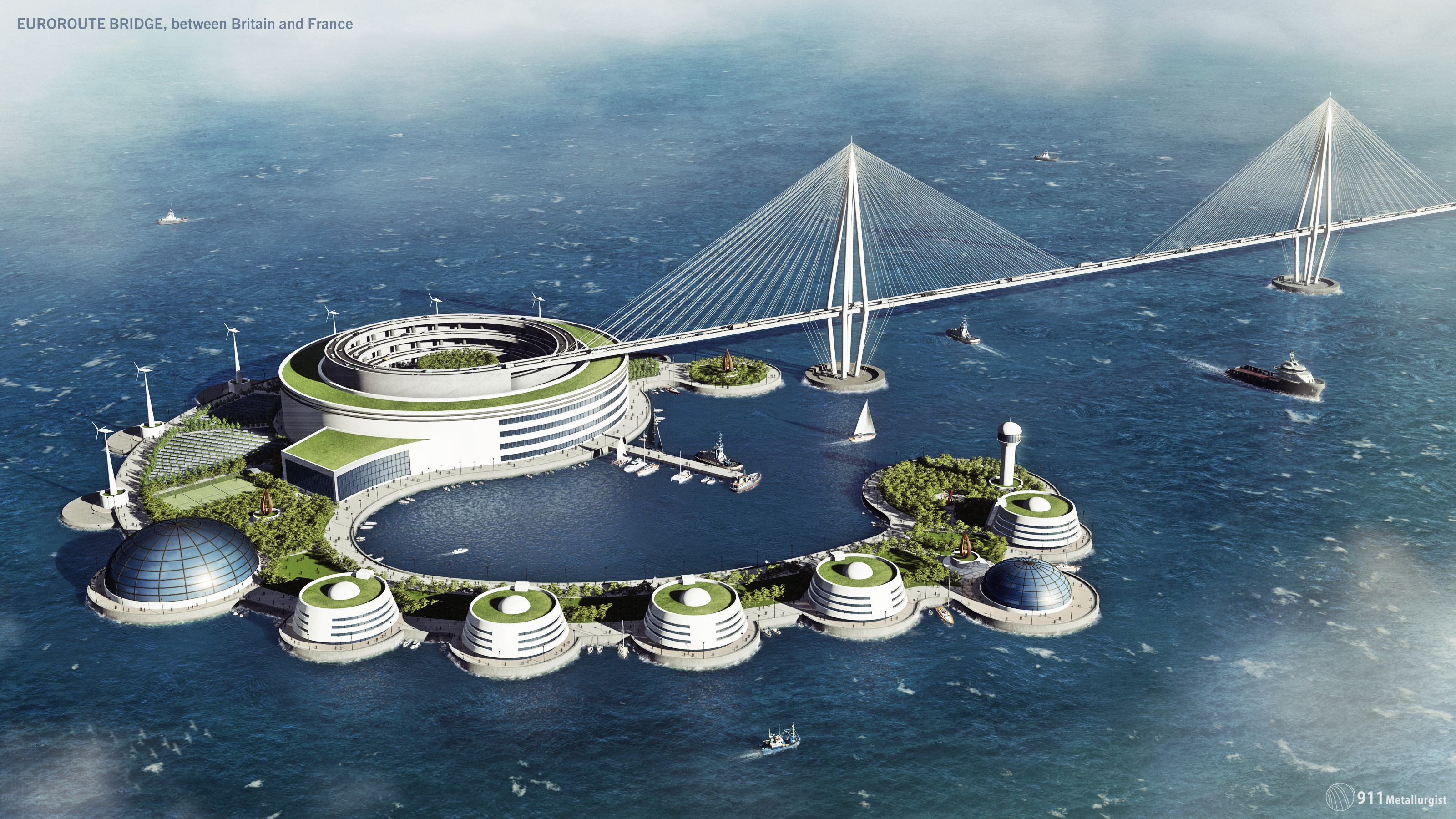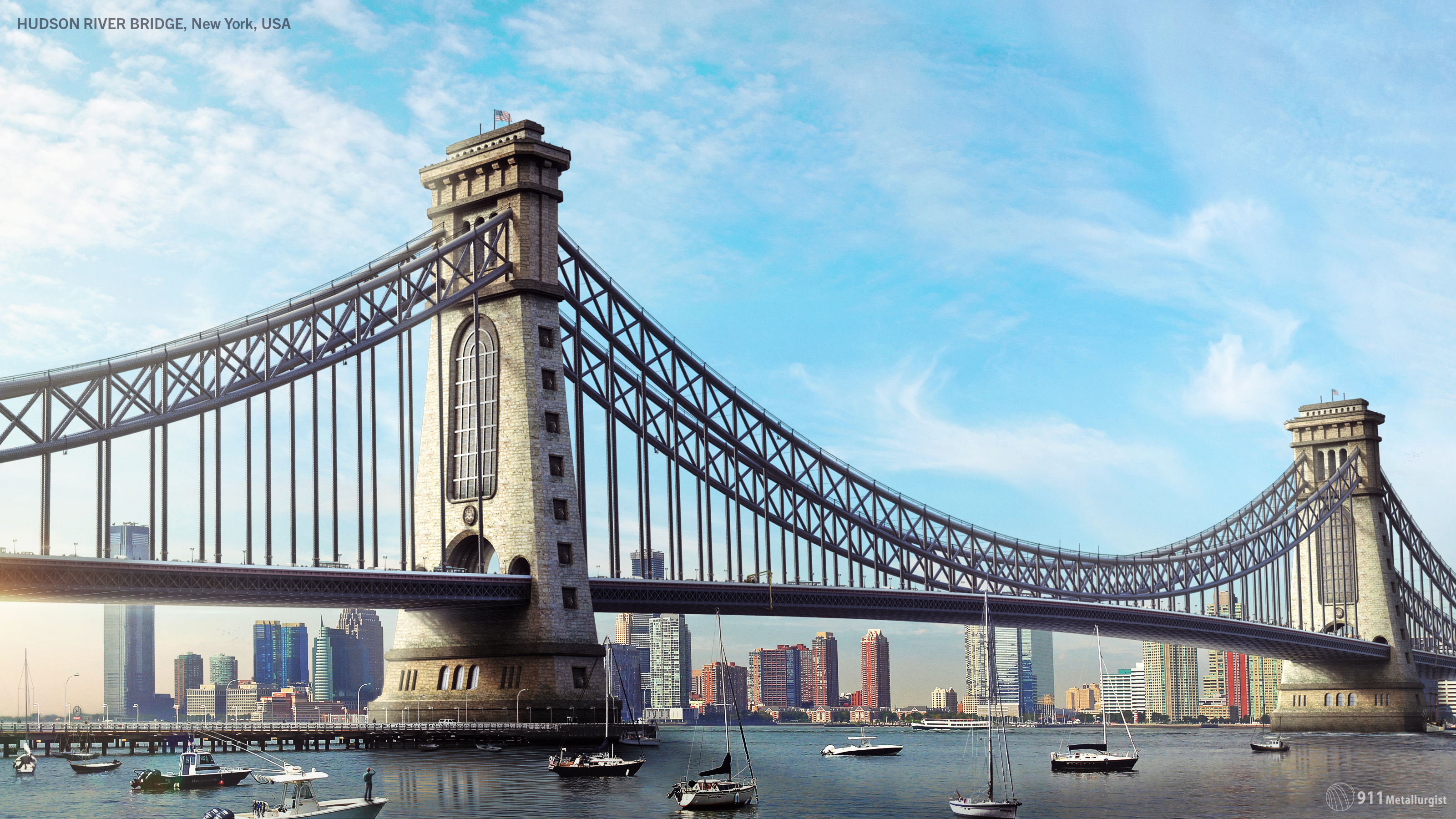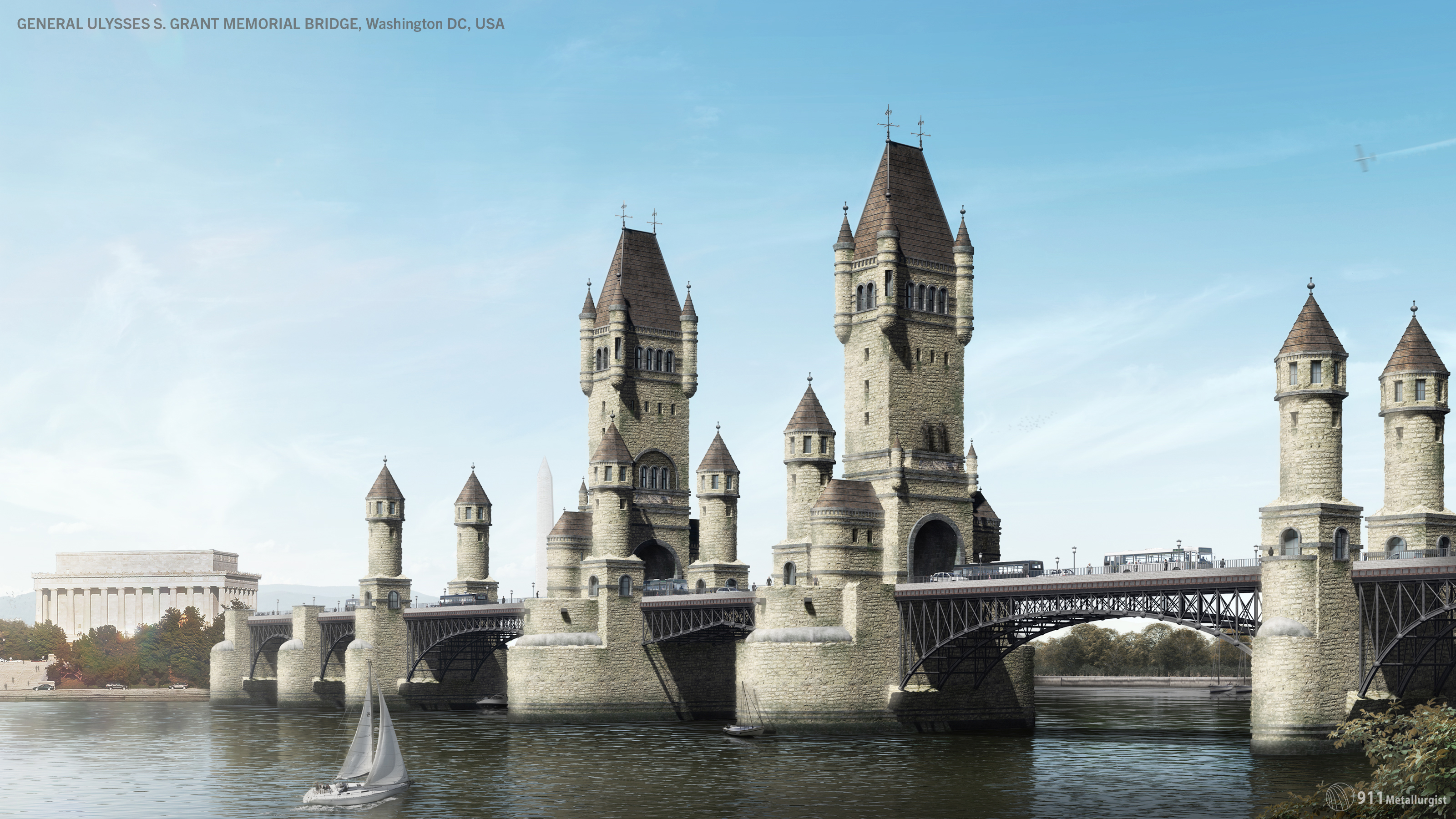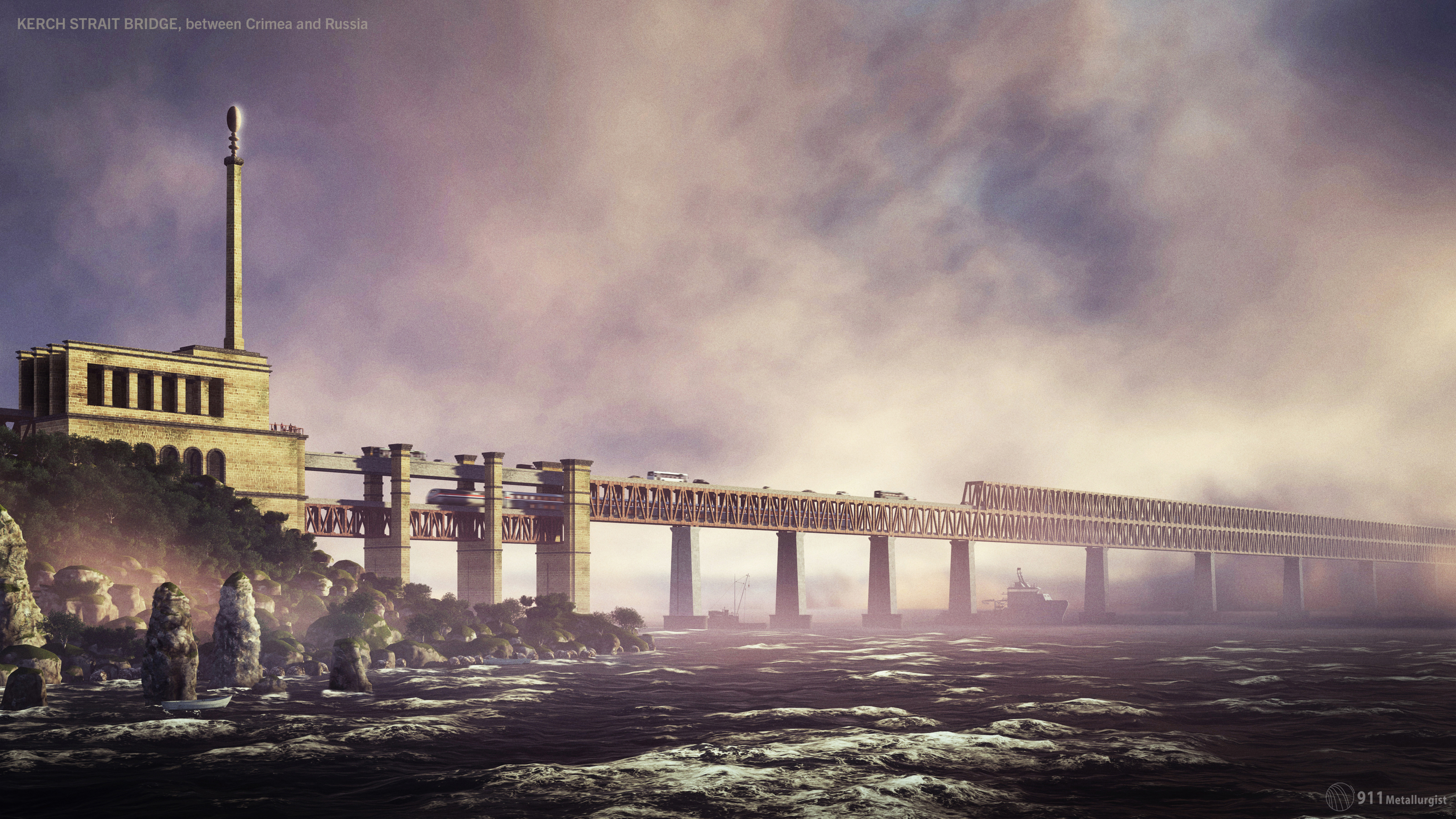Inspiring bridges are not easy to build. Consider the fate of John A. Roebling, who in 1867 started designing what would eventually be known as the iconic Brooklyn Bridge; but on Monday, June 28, 1869, his foot was crushed by a ferry boat upon its arrival at the edge of a dock at Fulton Ferry in New York. He refused medical treatment after his toes were amputated and died of tetanus 24 days later at the home of his son in Brooklyn on July 22, 1869.
4 Most Impressive Bridges Which Were Never Built

Though his was a freak accident, Roebling was not the only person who suffered a fatality as the result of the building of a famous bridge. At least 20 other people died while working on the construction of the Brooklyn Bridge; and eleven workers died as a result of constructing the Golden Gate Bridge in San Francisco — and those are only two examples…
…so that at least four potentially impressive bridges were never built is no surprise. In addition to the danger, financial impediments, significant time, considerable effort, assorted inconveniences, and sentiment by the public opposed to such a project can also prevent the construction of such a bridge: “…bridges reveal the marriage of art and engineering in a manner incomparable to any other structure”, according to this article from 911Metallurgist, which gives a glimpse into what four bridges would have looked like if they were actually built. “But while big ideas are important, building bridges is hard work. Many of the most visionary ideas are stopped in their tracks by financing, planning, or engineering reasons. We decided to look at four great bridges that never saw the light of day, and show them as they might have appeared.”
I have been given express written permission to use the images and the verbatim text from the aforementioned article in this article. Typically — in an article such as this one — I would add brief notes; but although I do have an interest in bridges and tunnels in general, I am not knowledgeable enough about them to add any value to the information which is already here.
1. EuroRoute Bridge, Between England and France
The Channel Tunnel sounded pretty sci-fi before it was built, but the experience of taking a train beneath the sea from France to England is actually pretty mundane. It would have been nice to have a window or two to see the aquatic world outside. But Jean-Paul Viguier’s EuroRoute Bridge, which competed for the honour of connecting Calais and Dover, might have been a bit too sci-fi for comfort!

In a design that would have worked for as a metaphor for Anglo-French relations, Viguier’s bridge would have reached just part of the way across the Strait of Dover before plunging into the sea. More precisely, the bridge from Calais would lead to a mid-sea island, from where it would spiral down past shops, hotels, and leisure facilities into an undersea tunnel. From there, the road would rise up to an identical island off the coast of England, leading back up onto a continuation of the bridge and into a hole bored into the white cliffs of Dover. Whew!
2. Hudson River Bridge, New York, United States of America
Gustav Lindenthal’s bridge was to have been twice the length of the George Washington Bridge, connecting West 57 Street in Manhattan to Hoboken in New Jersey. It was an epic vision, with room for 12 rail tracks, 24 motor lanes, and two pedestrian walkways.

The 8-foot concrete cornerstone was laid on June 18, 1895, but that’s about as far as the bridge ever got. Raising the $37 million required to complete the project became unfeasible in the wake of the 1893 financial crisis. The cornerstone remains, however, as a curio for visitors to The Stevens Institute of Technology in Hoboken, where it can still be found today.
3. General Ulysses S. Grant Memorial Bridge, Washington, District of Columbia, United States of America
John L. Smithmeyer and Paul J. Pelz drew up plans for a bridge to honour the 18th President of the United States just where the Arlington Memorial Bridge in the District of Columbia crosses today. But the government was unnerved by the bridge’s association with the Union Army general and vetoed the funding of the project.

It would have been quite a sight: “[No] such elaborate and imposing structure of the bridge’s kind has ever been built or even contemplated before in the United States,” according to a Baltimore Sun article published in 1887, “and its resemblance to the causeway of a great fortress, approached by a series of fortified outworks, is kept up by the bold arches spanning the roadway and their supporting towers and turrets.”
4. Kerch Strait Bridge, Between Crimea and Russia
In its earliest incarnation, the Russians envisioned a bridge over the Kerch Strait as the beginning of a new path from Europe to Asia. The British government, too, eyed the route for its potential for easy passage to colonized India. Then two world wars hit, and plans by Hitler’s architect, Albert Speer, to build a crossing, eventually dissolved along with the Russo-German alliance.

After World War II, the great Russian engineer Boris Konstantinov proposed a stark and melancholy bridge across the same gloomy corner of the Black Sea. Work began but despite the inclusion of hefty monuments in honour of Joseph Stalin, the Soviet leader pulled the plug for economic reasons.
With today’s visionaries look towards a greener future of sustainable living bridges and garden walkways, we’re saying goodbye to an era of monolithic engineering feats of the post-industrial age. Who knows what solarpunk visions are forming on the desktops of today’s great architects?
Summary
I have been to the white cliffs of Dover. You can take a fingernail and carve into the white facade of a cliff because they have the consistency of compressed talcum powder; so I cannot initially imagine that they can physically support a project such as the EuroRoute Bridge.
As for the Hudson River Bridge, was traffic so severe back in 1895 that a bridge with 24 lanes, 12 rail tracks and two pedestrian walkways really needed back then — or were they correct in possible prognostication of how bad the traffic situation would be in the future? Could New York and New Jersey use such a bridge today — and if so, exactly into where would the traffic empty?
One crossing in which I would be greatly interested — whether it is in the form of a bridge or a tunnel — is across the Bering Strait, which would connect Alaska in the United States with Russia, according to this Wikipedia article. With a Bering Strait crossing, one could potentially drive almost all the way around the world and create a new longest drivable distance on Earth — but such challenges as weather, distance, depth of water, costs of as much as $105 billion, and lack of infrastructure along the tundra on either side of the bridge have prevented this crossing from becoming a reality at this time.
This article written by Chris Anderson of CNN claims to list 24 of the most amazing bridges in the world as of 2017 — which already currently exist, of course.
Photograph of Tower Bridge in London ©2008 and photograph of Brooklyn Bridge ©2011 by Brian Cohen.

